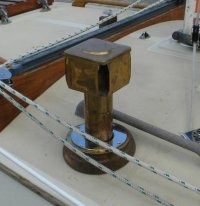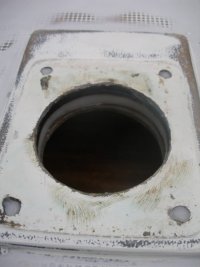Braveheart
Junior Member
We would like to install a diesel cabin heater and read with great interest an article we found here (or linked here) called "Sealing Deck Penetrations to prevent core rot" It was very good advice with regard to screw holes, but we are needing a 3" hole in our deck to accommodate a diesel cabin heater flue. We have a friend who put one in and now his gelcoat is crazing around the hole. Would anyone have any good advice as to how to apply the "Sealing deck penetrations" info to a 3" hole and how to prevent the crazing. Basically. we really want to do this the right way and go to school on someone who has done it right.
Thanks !
Thanks !
Last edited:


